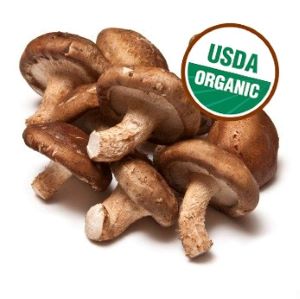Thinking About Copper
You may think of copper as what a penny is made of. Actually, only 2.5% of today’s penny is copper and the rest is zinc but originally, pennies were entirely copper. In addition to its role in U.S. coinage, copper is an essential mineral for human health. We need to get it from food and/or supplements in order to stay healthy. Copper has many roles in our bodies including helping enzymes work properly, supporting the immune and nervous systems, iron metabolism, and activating genes.
The Recommended Dietary Allowance (RDA) for copper is:
Birth to 12 months: 200 micrograms/day (this is the Adequate Intake rather than the RDA)
7-12 months: 220 micrograms/day (this is the Adequate Intake rather than the RDA)
1-3 years: 340 micrograms/day
4-8 years: 440 micrograms per day
9-13 years: 700 micrograms/day
14-18 years: 890 micrograms/day
19 years and older: 900 micrograms/day
Pregnancy: 1000 micrograms/day
Lactation: 1300 micrograms/day
Many whole plant foods supply us with copper.
10 Good Sources of Copper for Vegans
- Shiitake mushrooms, cooked – 650 micrograms of copper in ½ cup
- Cashews, roasted – 629 micrograms of copper in 1 ounce
- Dark chocolate – 500 micrograms of copper in 1 ounce
- Tahini – 480 micrograms of copper in 2 Tablespoons
- Tempeh – 460 micrograms of copper in ½ cup
- Soybeans, cooked – 360 micrograms of copper in ½ cup
- Sunflower seeds – 330 micrograms of copper in 2 Tablespoons
- Chickpeas, cooked – 320 micrograms of copper in ½ cup
- Almond butter – 290 micrograms of copper in 2 Tablespoons
- Firm tofu – 270 micrograms of copper in ½ cup
5 Facts About Copper
- Almost two-thirds of the copper in our body is found in our bones and muscles.
- The main determinant of how much copper is absorbed is the amount of copper in the diet. A lower percentage of copper is absorbed when one’s diet is high in copper; as much as 75% of copper is absorbed when one’s diet is well below the RDA (1, 2).
- Vegans typically consume more copper than nonvegetarians (3).
- In the United States, copper intakes are typically at or above recommendations.
- Copper deficiency is uncommon in humans.
References
- Turnlund JR, Keyes WR, Anderson HL, Acord LL. Copper absorption and retention in young men at three levels of dietary copper by use of the stable isotope 65Cu. Am J Clin Nutr. 1989;49:870–878.
- Turnlund JR, Keyes WR, Peiffer GL, Scott KC. Copper absorption, excretion, and retention by young men consuming low dietary copper determined by using the stable isotope 65Cu. Am J Clin Nutr. 1998;67:1219–1225.
- Mangels R, Messina V, Messina M. The Dietitian’s Guide to Vegetarian Diets, 4th ed; Jones & Bartlett: Sudbury, MA; 2021
To read more about copper see:
Copper Fact Sheet for Consumers (from National Institutes of Health; contains nonvegan sources of copper)

